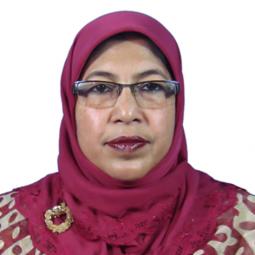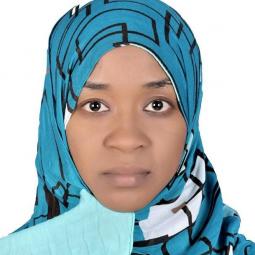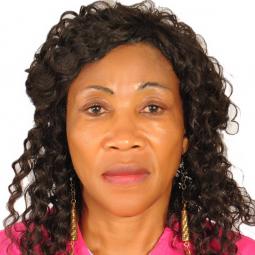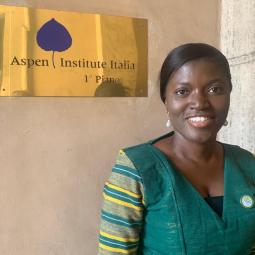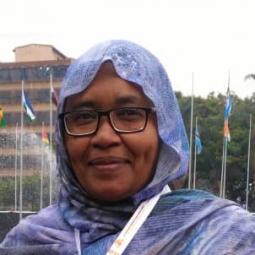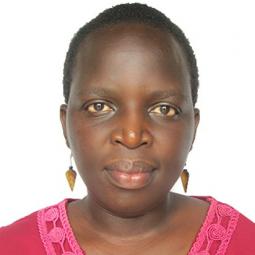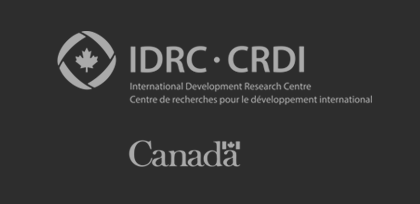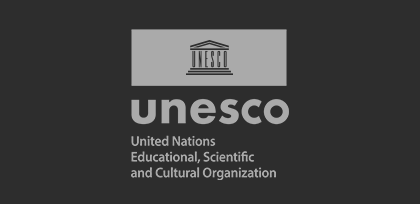OWSD NIGERIA NATIONAL CHAPTER PRESENTS THE IMPACT OF NEGLECTED TROPICAL DISEASES (NTDs) ON WOMEN AND GIRLS
December 17, 2022
OWSD Nigeria National Chapter University of PortHarcourt Branch Series of Scientific Communications: Chinwe Nwadiuto Eze on the Impact of Neglected Tropical Diseases on Women and Girls
THE IMPACT OF NEGLECTED TROPICAL DISEASES (NTDs) ON WOMEN AND GIRLS
By
DR. CHINWE NWADIUTO EZE
Neglected Tropical Diseases (NTDs), are called “neglected” because they generally are not considered public health problems in developed nations, they affect the world’s poor population and have not received as much attention as other diseases from the past. NTDs are mainly prevalent in tropical areas where they affect impoverished, underserved communities and disproportionately affect women and children. They collectively affect more than one billion people causing devastating health, social and economic consequences on individuals, families, and communities (Ochola et al., 2022).
The burden of NTDs is greatest in Low/Middle-Income Countries (Stolk 2016) due to poverty and lack of access to health and social protection systems (Lenk et al., 2016). In both rural and urban areas, substandard housing, poor sanitation infrastructure, and crowding all contribute to the transmission of NTDs. In many areas of the world where NDTs are prevalent, there are limited sources of safe water for drinking, cooking, and bathing, leading to a wide range of water-related diseases and health concerns (Mara and Sleigh, 2010)
NTDs affect hundreds of millions of women in a number of ways, constituting a substantial global burden on women’s health and well-being. They affect every aspect of women’s lives: physical, reproductive, sexual, emotional, social, and economic. NTDs affect women’s health overall, leading to a range of problems from anemia to blindness and putting women at risk for acquiring other diseases. NTDs affect women’s reproductive health, including fertility, pregnancy, labor and delivery, and neonatal health (Hotez, 2009). They affect women’s sexual health, increasing the risk of some sexually transmitted infections and disrupting sexual functioning. They affect women’s social health by promoting exclusion and stigma (WHO, 2010). And they affect women’s economic health, by affecting women’s ability to work.
The World Health Organization (WHO) has prioritized twenty diseases as NTDs. These are
- Buruli Ulcer
- Chagas Disease
- Dengue hemorrhagic Fever
- Taeniasis/ Cysticercosis
- Dracunculiasis (Guinea Worm Disease)
- Echinococcosis
- Endemic treponematosis (Yaws)
- Food borne trematodiasis
- Fascioliasis
- Human African Trypanosomiasis ( African Sleeping Sickness)
- Leprosy (Hansen’s Disease)
- Leishemaniasis
- Lymphatic filariasis
- Mycetoma
- Onchocerciasis
- Schistosomiasis
- Soil-transmitted Helminths (STH) (Ascaris, Hookworm, and Whipworm)
- Rabies
- Scabies
- Trachoma
Characteristics of Neglected Tropical Diseases (NTDs)
- NTDs affect the poorest people who have poor access to safe water, sanitation, good hygiene, and basic health services.
- NTDs are chronic and slowly developing.
- They rarely cause death.
- NTDs can cause severe pain and life-long disabilities.
- Disabilities caused by NTDs are usually irreversible.
- A person can be affected by more than 1 NTD at the same time.
The infectious agents responsible for NTDs
- Viruses (rabies and dengue)
- Bacteria (leprosy, yaws, trachoma and Buruli ulcer)
- Protozoa (leishmaniasis and trypanosomiasis)
- Helminth parasites (schistosomiasis, lymphatic filariasis, onchocerciasis, intestinal worms, and Guinea worm).
- Fungi
- Ectoparasites
NTDs can be transmitted through:
- flies, fomites (e.g., skin cells, hair, clothing, or bedding), and fingers (trachoma)
- mosquitoes (dengue fever and filariasis)
- tse tse flies (sleeping sickness)
- sandflies (leishmaniasis)
- blackflies (onchocerciasis)
- snails, which release infective larvae into the water to penetrate human skin (e.g., schistosomiasis)
faeco-oral route (e.g., soil-transmitted helminths) or via food products etc.
The Impact of NTDs on Women and Girls
- NTDs affect hundreds of millions of women in a number of ways, constituting a substantial global burden on women's health and well-being.
- They affect every aspect of women's lives: physical, reproductive, sexual, emotional, social, and economic.
- NTDs affect women's health overall, leading to a range of problems from anemia to blindness and putting women at risk for acquiring other diseases.
- In sub-Saharan Africa, women are caregivers in the family; this predisposes them to NTDs such as trachoma as they risk transferring bacteria into their own eyes when tending to sick family members. When a woman becomes blind, her educational opportunities and ability to earn a living become severely limited, promoting poverty.
- NTDs that cause disfigurement and disability (such as lymphatic filariasis) can have a disproportionately negative impact on the employability and marriageability of affected women, making them dependent on family members and potentially leading to stigmatization and social exclusion.
- Women are likely to be stigmatized after contracting NTD infections. For example, women presenting with lesions from Cutaneous Leishmaniasis (CL) are more stigmatized and deemed unfit for marriage or raising children. The resulting stigmatization causes or escalates psychological disorders and restricts social participation.
- Stigma affects women’s occupational roles, resulting in a loss of income, poor access to resources, decreased social interactions, and diminished social identity. Furthermore, stigmatized women experience a loss of purpose in their lives and low self-esteem. Women who are stigmatized and labeled tend to shy away from seeking treatment and consequently suffer from complications such as infertility and death
- In some cases, their impact disproportionately affects girls and women, whose marriage prospects may diminish or who may be left vulnerable to abuse and abandonment.
- NTDs affect women's reproductive health, including fertility, pregnancy, neonatal health, labor, and delivery. Women experience more negative health effects such as iron deficiency when pregnant due to compromised immunity
- Infections with NTDs contribute to poor fetal development, maternal anemia, maternal mortality, pregnancy complications, infant mortality, and low birth weight. It is estimated that one out of every three pregnant women in endemic countries is infected with hookworm, a type of soil-transmitted helminth (STH). This NTD causes iron deficiency anemia and increased blood loss during childbirth
- They affect women's sexual health, increasing the risk of some sexually transmitted infections and disrupting sexual functioning.
- Women living with female genital schistosomiasis can be at three times the risk of contracting HIV. Globally, adolescent young women are still becoming HIV-positive at an alarming rate and the HIV community has classified them as a ‘key population
- They affect women's economic health, by affecting women's ability to work making them dependent on family members and potentially leading to social exclusion
- The indirect impact of NTDs can also disproportionately affect women and girls as caregivers, having to give up their jobs or drop out of school in order to take care of a sick family member.
Women and Lymphatic filariasis (LF)
Lymphatic filariasis is a neglected tropical disease caused by the parasite Wuchereria bancrofti, a parasite transmitted into the bloodstream by the bite of a female culex mosquito and subsequently passes into the lymphatic system
- LF can lead to lymphedema, a swelling of the legs and genitals. This can in turn lead to disfiguring and disabling elephantiasis, a chronic condition in which the infected person's leg grows to resemble an elephant's leg. The swollen leg can become infected with bacteria and ulcerated, requiring special care and causing decreased mobility.
- Lymphoedema of various parts of the body, such as the limbs, genitalia, and breasts, results in grotesque deformities, which are a source of pain and embarrassment, besides being a social and financial burden to the affected women
- Women with LF suffer psychological distress, hopelessness, shunning, and discrimination
- For women, LF brings about a devastating cascade of consequences, including painful social stigma, sexual disability, inability to work, and isolation. Communities frequently shun those disfigured
- LF affects women's ability to support themselves, especially those engaged in agriculture, where physical demands are intense.
- Women who develop the disease when they are young may be kept from getting an education and are often unable to get married. Women with visible signs may never marry or spouses and families will reject them.
- LF could result in potential mental health, exclusion from societal roles, reduced access to health services, reduced ability to engage in effective employment, and reduced marital and educational prospects – all contributing to a worsened mental health status reflected in a high prevalence of depression.
Women and Female Genital Schistosomiasis (FGS)
- Female Genital Schistosomiasis (FGS) is a disease of the female reproductive system caused by infection with Schistosoma haematobium, a parasite acquired through skin contact with infested water
- Urogenital schistosome eggs lodge in urinary and reproductive organs. In the Fallopian tubes, uterus, cervix, and lower genital tract of girls and women they form fibrotic nodules that result in female genital schistosomiasis (FGS), a condition which is associated with lesions, bleeding and infertility as well as social stigma and depression.
- Female genital schistosomiasis (FGS) may cause abnormal vaginal discharge, contact bleeding, retarded puberty, anemia, miscarriage, preterm delivery, genital tumors, ectopic pregnancies, carcinoma, increased susceptibility to HIV, and a higher risk for sexually transmitted diseases.
- If left untreated, it may cause infertility, miscarriage, and increased susceptibility to HIV and Human Papillomavirus (HPV), which has far-reaching economic and social consequences for both livelihoods and well-being.
REFERENCES
- Hotez PJ, Fenwick A, Kjetland EF. (2009): Africa's 32 cents solution for HIV/AIDS, PLoS Neglected Tropical Diseases. p. e430. http://www.plosntds.org/article/info:doi/10.1371/journal.pntd.0000430. [PMC free article] [PubMed]
- Lenk E.J., Redekop W.K., Luyendijk M., Rijnsburger A.J., Severens J.L. (2016): Productivity loss related to neglected tropical diseases eligible for preventive chemotherapy: A systematic literature review. PLoS Negl. Trop. Dis.;10:e0004397. doi: 10.1371/journal.pntd.0004397.
- Mara D, Sleigh A. (2010): Estimation of ascaris infection risks in children under 15 from the consumption of wastewater-irrigated carrots, Journal of Water and Health. http://elib.cdc.gov:3183/jwh/008/0035/0080035.pdf. [PubMed]
- Ochola EA, Elliott SJ, Karanja DMS (2021). The Impact of Neglected Tropical Diseases (NTDs) on Women's Health and Wellbeing in Sub-Saharan Africa (SSA): A Case Study of Kenya. Int J Environ Res Public Health 18(4):2180.
- Ochola, E.A., Karanja, D.M.S. & Elliott, S.J (2022). Local tips, global impact: community-driven measures as avenues of promoting inclusion in the control of neglected tropical diseases: a case study in Kenya. Infect Dis Poverty 11, 88
- Stolk W.A., Kulik M.C., Le Rutte E.A., Jacobson J., Richardus J.H., De Vlas S.J., Houweling T.A.J. (2016): Between-country inequalities in the neglected tropical disease burden in 1990 and 2010, with projections for 2020. PLoS Negl. Trop. Dis. ;10:e0004560. doi: 10.1371/journal.pntd.0004560. [PMC free article] [PubMed] [CrossRef] [Google Scholar]
- World Health Organization. Ending the Neglect to Attain the Sustainable Development Goals: A Road Map for Neglected Tropical Diseases 2021–2030. World Health Organization; Geneva, Switzerland: 2020. [Google Scholar]



